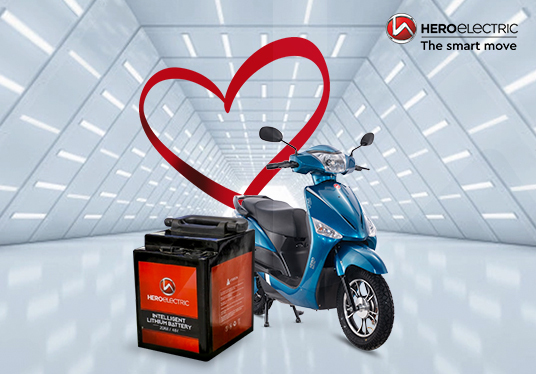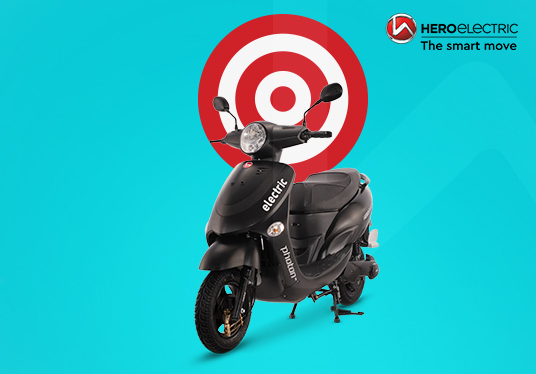The year 2020 was unprecedented, bringing turmoil on political, economic, healthcare, and all above, human level. Because of Covid-19 lockdowns, many industries were at a halt. One of the worst-hit industries was the automobile industry, which saw a loss of $1.2-2.0 billion per month during lockdowns, as reported by The Economic Times.
However, now the industry is slowly recovering. And the automobile and mobility leaders are getting back in the race. However, despite the market situation, the electric mobility industry is still rising. Even at the beginning of this year, more than half a million buyers bought electric cars worldwide. In India, the demand is slowly increasing. 1.35 Lakhs EVs have registered so far in 2021. Is this the decade we completely go electric and change the way we commute? Let us find out why this may be so.
Affordable Products Attracting Manufacturers and End-consumers.
More than 1 million e-rickshaws are running in the streets of India today, which carry hundreds of people every day, and this increased EV usage is not because of achieving sustainability. Yes, it is essential, but the increase in demand for EVs is because of affordability and customer experience.
If we look at the anatomy of Electric Vehicles, they have lesser moving parts compared to traditional bikes and scooters, giving them a new-age look. They are convenient in many ways. You can charge them at your homes, avoiding trips to the exhausting fuel stations, without paying hefty fuel prices.
With the help of machine learning algorithms, we can easily upgrade them, making them adaptable as per a rider’s needs. EVs can also track the power and health of their vehicles as they have sensors. Hence, it all contributes to why the future of mobility is electric and why it is more than just an electric scooter.
The mobility revolution is another reason why EV has a brighter future. When the first scooter came, it took small-scale increments, stretched over the years to provide what it does today. We will not likely see the same shift here because we have advanced technology, not increments, rather steps or leaps. The change is going to be quick, like cell phones to smartphones. Hence, it has opened doors for investors in the future.
Electric is the way to Go Clean
If we look at the evolution of transportation in India, trucks were the first to dominate the shipping market. And then, other modes of transportation—cars, scooters, and rickshaws—were introduced, which slowly changed the whole delivery ecosystem; this gave a new look to the mobility industry and the economy.
However, it had a big pitfall—carbon emissions. Today, India hosts 22 out of 30 most polluted cities globally, as per the study revealed by IQAir, and we need clean energy to stop pollution. To overcome this feat, India is looking for electric mobility solutions so that by the end of 2050, it achieves its zero-greenhouse emission target.
Along with the government, the producers of electric mobility in India have been taking steps to increase EV consumption. Electric bikes and scooters are running actively in major cities of India, including Delhi, Mumbai, Chennai, Noida, and other parts of the country.
Indeed, For FY21, the top three states in terms of EV sales include Uttar Pradesh—which harbors the most polluted city in India, Ghaziabad—Bihar, and Karnataka. The CEEW report further revealed that 96% of the EV sales were of electric two-wheelers and three-wheelers.
E-commerce giants and other industries too have contributed to the EV momentum. Flipkart, one of India’s largest e-commerce giants, has joined hands with Hero Electric, India’s largest electric scooter company, in deploying over 25,000 electric scooters by the year 2030. This partnership will significantly reduce its operational cost, save money on fuel and maintenance, and provide employment opportunities to people with no vehicles. Thus go-clean and electric mobility initiatives have pushed the EV industry, witnessing an uptake in the upcoming years.
Government Initiatives
The Indian government understands the need for sustainability and clean energy. There are many campaigns the government has been launching to promote EV adoption. ‘Switch Delhi’ and ‘Go Electric’ are some of the campaigns launched by the government to bring electric awareness.
The recently revised FAME II (Faster Adoption and Manufacturing of Electric Vehicles in India scheme) scheme now offers double the previous subsidy, accounting for a total incentive of 15,000 KWh for electric two-wheelers. This step will increase the EV demand in the market, “possibly converting 20% of market electric,” as said by Mr. Naveen Munjal, Managing Director, Hero Electric Vehicles Pvt Ltd.
Allowing Tesla, one of the well-known electric car manufacturers worldwide, to sell vehicles is a commendable step. This launch of the tech giant in India will boost EV sales. Implementing government policies for the installation of charging stations is also an encouraging move. Future partnerships with EV manufacturers are also pacing the process ahead.
There are miles to go
There is no denying that the future of mobility is electric, and it has a lot to offer. However, there is a lot to do. First, the upfront cost of purchasing these electric vehicles is high. To make EVs more affordable, the government has been taking steps. However, more initiatives can speed up the dire need for clean energy.
Second, India is facing spacing and parking problems because of congestion. To install charging stations, India needs space, which we can in places like schools, hospitals, homes, and anywhere where the policies allow. Third, the battery cost of Lithium-ion is high for EVs, which will only decrease with time when India increases its production.
The brighter future of electric mobility is near. But it will pick an exuberant pace if both government and mobility leaders contribute to the electric mobility ecosystem.
Hero Electric: Steering the EV momentum In India
Hero Electric is India’s largest electric 2-wheelers manufacturer, offering a wide range of EVs across India through its 500+ distributing centers. The Munjal family started its business in 2007, but now it has covered 65 % of the Indian electric two-wheeler market. With its manufacturing plant based in Ludhiana, Hero Electric has trained over 5000+ mechanics and creating awareness about clean energy.
Initially, the prices of electric vehicles started from INR 50,000 and touched INR 70,000 or more, depending on the battery type. However, since the FAME II scheme implementation, Hero electric has reduced prices for its vehicles by 12%-33%. The products are affordable and comfortable, designed for anyone from school students to senior citizens. No doubt, it has been India’s trusted brand for years.
Last year, it sold over 50,000 electric scooters and motorcycles and set up over 1500 charging stations in different states. Naveen Munjal, the managing director of Hero Electric, while discussing with Autocar Professional, revealed that they expect to deploy 12-13 million 2-wheelers in India by 2030.



